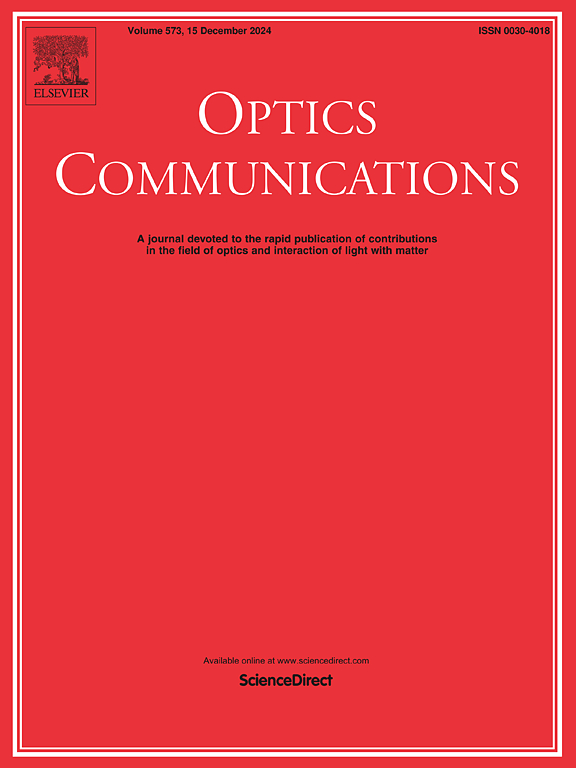Optimal angle as a key enabler for efficient electromagnetically induced absorption via laser intensity tuning in a Ξ−V type atomic system
IF 2.5
3区 物理与天体物理
Q2 OPTICS
引用次数: 0
Abstract
We report the key role of the control light’s incident angle in achieving efficient electromagnetically induced absorption (EIA) in the transition of the 87Rb atom in a type atomic system. By precisely adjusting the control light’s incident angle to 1.7°and subsequently tuning its power, a significant conversion from electromagnetically induced transparency (EIT) to EIA is achieved. Experimental findings reveal that the saturation effect is effectively suppressed at this angle, while constructive interference between dressed states generated by the three-photon coherence greatly improves the EIA signal contrast. Theoretical calculations, employing a dressed perturbation chain approach for a Doppler-broadened four-level atomic model, corroborate our experimental observations. Furthermore, with optimized parameter settings, we observe three EIA signals across various hyperfine transitions concurrently at different detuning frequencies. This work provides a new way for efficient coherent modulation in applications such as precision measurement and optical storage.
在Ξ−V型原子体系中,通过激光强度调谐,最佳角度是实现高效电磁诱导吸收的关键因素
我们报道了在Ξ−V型原子体系中,控制光的入射角在87Rb原子的5S1/2 - 5P3/2 - 5D5/2跃迁中实现高效电磁感应吸收(EIA)的关键作用。通过将控制光的入射角精确调整到1.7°,并随后调整其功率,实现了从电磁感应透明(EIT)到EIA的显著转换。实验结果表明,在此角度下,饱和效应被有效抑制,而三光子相干产生的修饰态之间的相干涉大大提高了EIA信号的对比度。理论计算,采用修饰微扰链方法对多普勒加宽四能级原子模型,证实了我们的实验观察。此外,通过优化参数设置,我们在不同失谐频率下同时观察到三个EIA信号在不同的超精细跃迁中。这项工作为高精度测量和光存储等应用提供了一种高效相干调制的新途径。
本文章由计算机程序翻译,如有差异,请以英文原文为准。
求助全文
约1分钟内获得全文
求助全文
来源期刊

Optics Communications
物理-光学
CiteScore
5.10
自引率
8.30%
发文量
681
审稿时长
38 days
期刊介绍:
Optics Communications invites original and timely contributions containing new results in various fields of optics and photonics. The journal considers theoretical and experimental research in areas ranging from the fundamental properties of light to technological applications. Topics covered include classical and quantum optics, optical physics and light-matter interactions, lasers, imaging, guided-wave optics and optical information processing. Manuscripts should offer clear evidence of novelty and significance. Papers concentrating on mathematical and computational issues, with limited connection to optics, are not suitable for publication in the Journal. Similarly, small technical advances, or papers concerned only with engineering applications or issues of materials science fall outside the journal scope.
 求助内容:
求助内容: 应助结果提醒方式:
应助结果提醒方式:


